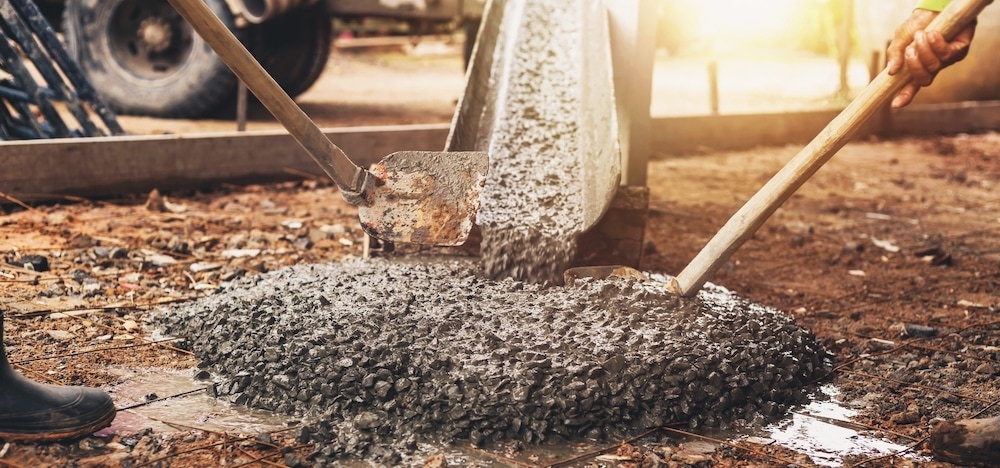2024.01.11
Sustainability
AQUALOC™ Polycarboxylate Ether (PCE) Polymer Improves Concrete Performance and Sustainability Compared to Conventional PCEs

Thanks to their ability to improve the sustainability and physical properties of concrete building materials, superplasticizer admixtures continue to grow in importance. While there are several types of superplasticizers available on the market today, the standout among them is polycarboxylate ether (PCE).
Because this polymer admixture reduces water content requirements while increasing the workability, strength and durability of concrete — PCE offers vital advantages to modern concrete production by providing high water-reduction rates, excellent workability and low slump loss compared to other superplasticizer admixtures.
AQUALOC™ polymers are a series of PCE polymers that capitalize on these performance benefits while also supporting sustainability efforts in concrete manufacturing and construction. Here’s how.
Improved Hydration
When added to concrete mixtures, PCE-based superplasticizers reduce water content and improve fresh concrete’s fluidity and rheological qualities. This benefit is the result of PCE’s molecular structure that consists of a polymeric backbone and carboxylic acid side chains. The structure imparts a high degree of steric hindrance to concrete particles, keeping the particles separated to increase water dispersion throughout the mixture. This dispersive effect also reduces void likelihood when pouring and packing the wet mixture, improving the compaction and consolidation performance.
Hydration is a key contributing factor to the workability of fresh concrete. Superplasticizer-mixed batches achieve optimal workability with less water. In addition to resource efficiency, improving the flow characteristics allows the mixture to easily fill molds with tightly packed reinforcements — a major benefit for structural concrete applications.
High-performance concrete (HPC) can also benefit from improved workability. Compared to normal-strength concrete (NSC), HPC generally consists of finer aggregates and is mixed with a lower water-cementitious material ratio. Superplasticizers enable HPCs to use even less water to achieve the same performance, allowing the concrete to be poured and compacted easier while improving the strength and durability of the finished structure.
AQUALOC polymers feature an altered molecular structure that improves PCE’s performance even further. Similar to conventional PCEs with a comb-like structure, it features a shorter polymeric backbone and longer acid “teeth” with the addition of polyethylene side chains. This structural modification allows the polymer to leave a smaller footprint on a cement grain and promote better hydration through improved steric repulsion.
AQUALOC’s unique structure also allows it to provide the same performance of other PCE-based superplasticizers at smaller concentrations.
Enhanced Durability and Strength
PCE-based admixtures also enhance concrete durability by increasing resistance to cracking, shrinkage and creep. Thanks to better water dispersion, the uniformly distributed cement particles reduce the potential of cracks forming due to freeze-thaw or shrinking during setting.
Improved particle dispersion provides a tighter-packed concrete mixture that results in a higher compressive strength. In addition to strength benefits, tightly packed concrete structures also exhibit less permeability. Reducing permeability improves durability by minimizing the potential of contaminant ingress and improving freeze-thaw resistance.
Sustainable Concrete Production
Concrete manufactured with PCE is compatible with a wide range of various cementitious materials like calcium aluminate and calcined clays. Because blended concrete mixtures improve sustainability and structural performance, they are increasingly more common in construction. Conventional superplasticizers are generally challenged when applied to blended concrete and will result in reduced performance, but the benefits of PCE-based admixtures remain consistent.
PCE-based admixtures support sustainable concrete manufacturing by using less natural resources like water and limestone. And, because of their durability and environmental resistance, concrete structures consisting of PCE admixtures require less repair and reconstruction over time. When repairs are needed, manufacturing the replacement material requires less emissions and water.
Because AQUALOC polymers outperform conventional PCE-based admixtures, sustainability gains from the reduced water consumption are magnified.
Learn more on our product page.
Newsletter Sign-Up
Sign up for our e-newsletter and learn more about what we do at NAII Page Top
Page Top  Back to List
Back to List